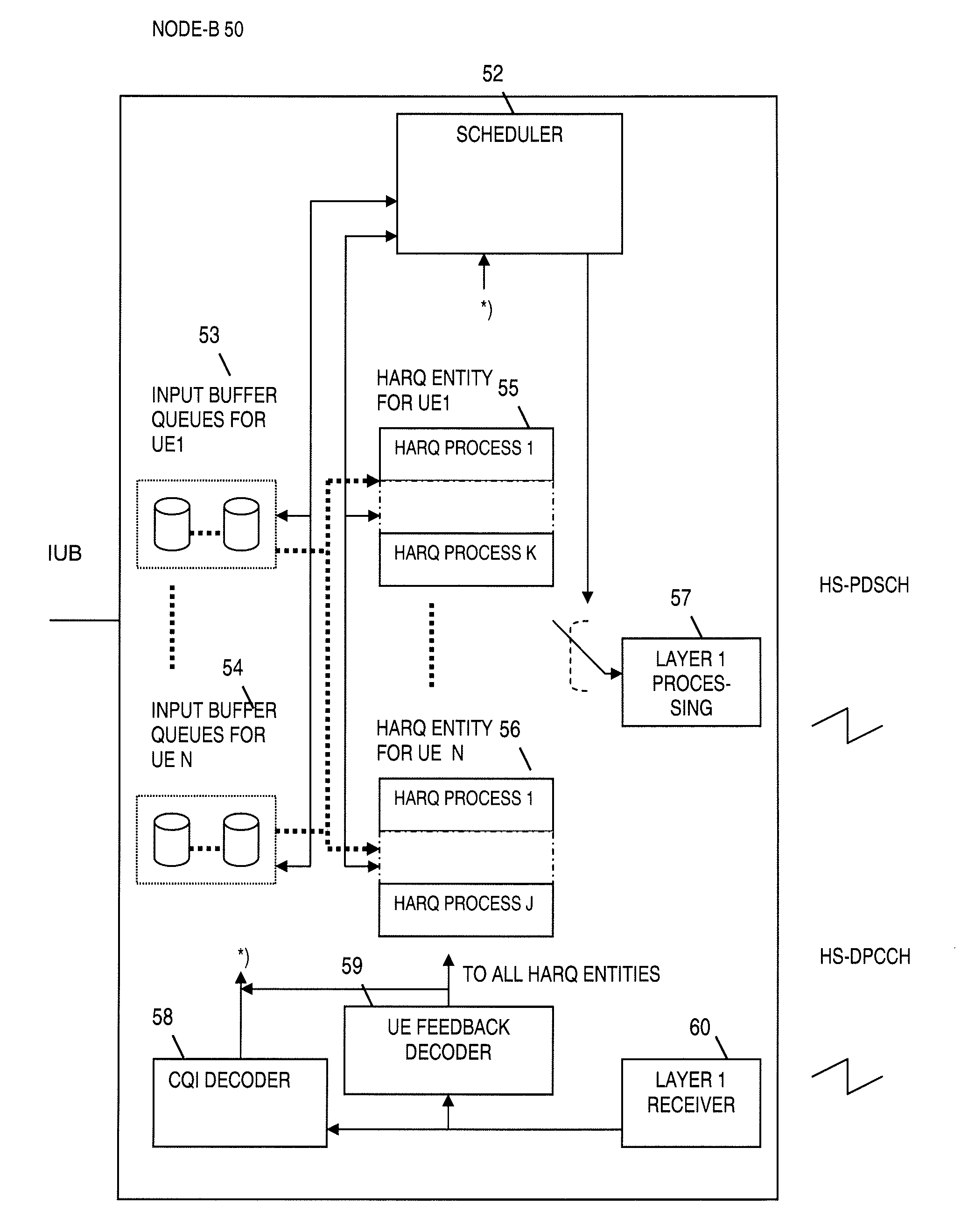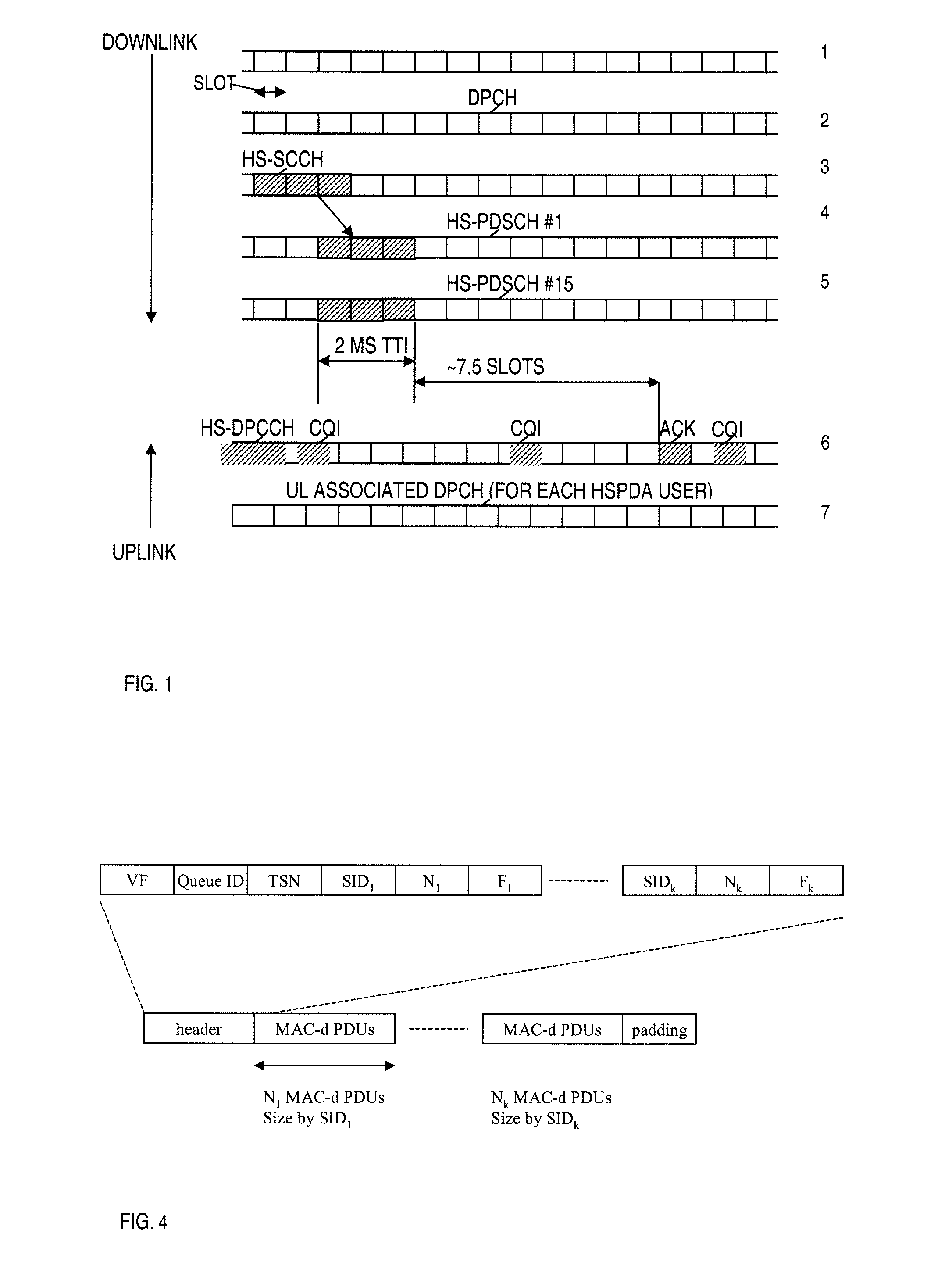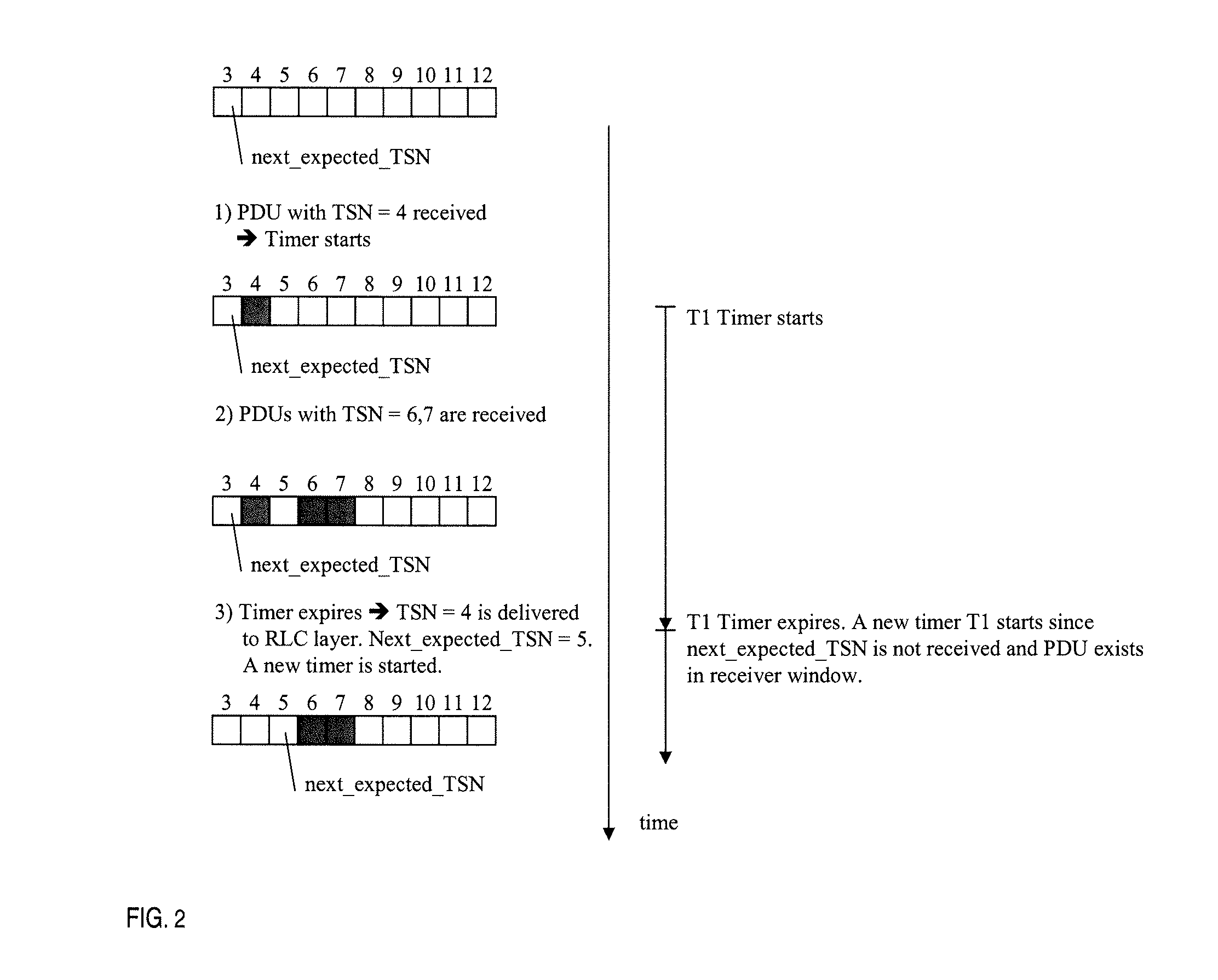Next data indicator handling
a technology for displaying indicators and data, applied in the field of packet data traffic and signaling, can solve problems such as increasing the risk of stalling the node-b sender
- Summary
- Abstract
- Description
- Claims
- Application Information
AI Technical Summary
Problems solved by technology
Method used
Image
Examples
Embodiment Construction
[0102]In FIG. 7, a state diagram pertaining to a given HARQ process in a HARQ entity according to the invention is shown. The state diagram illustrates the interaction of a given HARQ process with the Node B scheduler, which is shown in the implementation shown in FIG. 5. According to FIG. 7, the HARQ process may attain a free state 101, where no data is assigned for the given HARQ process. When data is handed down from the scheduler, 52, for assignment to the HARQ process, the given data is assigned to the HARQ process for transmission, state 102. In this state, the data is buffered and is ready for transmission / retransmission or discarding depending on the outcome of the communication with the interacting receiving side of the HARQ process, that is, for instance, the user entity as receiving side. At the reception of a (re-)transmit message 109 from the scheduler, the HARQ process transmits buffered data. If a NACK is received, or DTX, the process remain in state 102 and is ready ...
PUM
 Login to View More
Login to View More Abstract
Description
Claims
Application Information
 Login to View More
Login to View More - R&D
- Intellectual Property
- Life Sciences
- Materials
- Tech Scout
- Unparalleled Data Quality
- Higher Quality Content
- 60% Fewer Hallucinations
Browse by: Latest US Patents, China's latest patents, Technical Efficacy Thesaurus, Application Domain, Technology Topic, Popular Technical Reports.
© 2025 PatSnap. All rights reserved.Legal|Privacy policy|Modern Slavery Act Transparency Statement|Sitemap|About US| Contact US: help@patsnap.com



